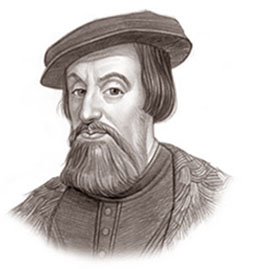The history of chocolate dates back to exactly 4000 years ago. According to historical sources, chocolate was used as a beverage for the first time in Mexico. B.C. Discovery of a pre-Olmec society that lived in what is now Mexico in the 1900s.
Chocolate is produced by planting cocoa seeds in the tropical rainforests of Central America and then fermenting them into a paste. The first chocolate is very different from today's chocolates; It is a bitter drink in liquid form. Its formula is as follows: Fermented and paste-formed cocoa, water, vanilla, honey, hot pepper and other spices... Olmec, Aztec and Mayans thought that this drink gives energy and strength and makes people happy. They believe it has a mystical property.
The Mayans, on the other hand, are fascinated by cocoa and believe that he is the god of cocoa; They worship him for happiness and peace. In this period, chocolate is a very valuable beverage that is not offered to everyone. Only in holy ceremonies; It can be drunk by kings, soldiers, clergy and nobles. According to some sources, the power of chocolate is so exaggerated that it is rumored that the 16th century Aztec king and nobles drank large amounts of chocolate to increase their libido.
The spread of chocolate from America to Europe and from there to the world is thanks to a Spanish explorer named Hernan Cortes. In fact, it is claimed that Christopher Columbus discovered cocoa for the first time, but never brought it to his country, or even tasted it. The sailor Cortes, who invaded Mexico, becomes the first person to bring chocolate to Europe. By adding sugar to this drink for the first time, the Spaniards take an important step towards today's chocolate. Spain has been hiding chocolate from other countries for a century or so. Until King of Spain III. Phillip's daughter, Princess Anne, and King of France XIII. until Louis got married. The princess who adores chocolate shapes history by taking her chocolates to France. As the demand for chocolate increases in Europe over time, cocoa plantations are established in colonial countries and cocoa production begins rapidly. The production of chocolate, which has long been the food of the aristocrats and nobles, undergoes a revolution with the cocoa machine, invented by Dutch chemist Coenraad Johannes van Houten. The machine, invented in 1828, separates the cocoa butter from the roasted cocoa seeds, and the remaining chocolate can be turned into a dry powder. This powder; It can be mixed with liquid and other materials, becomes solid and edible, easily digested chocolate.
This is how the price of chocolate production drops, making it a food within reach of ordinary people. |  |
For the first time in 1847, J.S. A British company called Fry & Sons is making an important breakthrough in the history of chocolate by producing solid edible chocolate. Rodolphe Lindt, on the other hand, produced a machine that mixed cocoa butter homogeneously with cocoa powder in 1879, producing chocolate with a velvety texture and more flavor.


